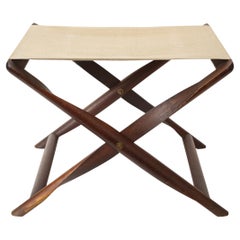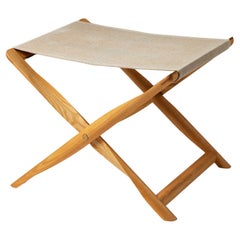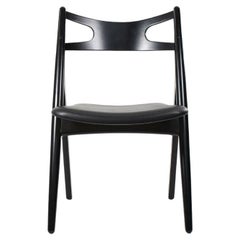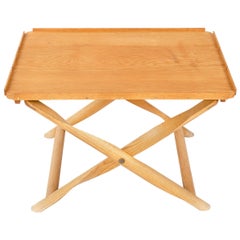Kaare Klint Propeller
Vintage 1930s Danish Scandinavian Modern Stools
Canvas, Walnut
Mid-20th Century Danish Mid-Century Modern Stools
Canvas, Ash
21st Century and Contemporary Danish Scandinavian Modern Stools
Oak, Leather
Recent Sales
Vintage 1930s Danish Scandinavian Modern Stools
Linen, Ash
Vintage 1920s Danish Scandinavian Modern Tray Tables
Linen, Ash
Vintage 1930s Danish Scandinavian Modern Card Tables and Tea Tables
Brass
Vintage 1960s Danish Scandinavian Modern Stools
21st Century and Contemporary Danish Scandinavian Modern Stools
Canvas, Ash
Vintage 1930s Danish Campaign Chairs
Canvas, Teak
Early 20th Century Danish Scandinavian Modern Stools
Canvas, Elm
People Also Browsed
2010s German Mid-Century Modern Chandeliers and Pendants
Brass
21st Century and Contemporary Italian Modern Screens and Room Dividers
Paper
Mid-20th Century Danish Mid-Century Modern Dining Room Chairs
Oak, Teak
Vintage 1970s Italian Mid-Century Modern Table Lamps
Ceramic, Plastic, Parchment Paper
Vintage 1970s French Hollywood Regency Floor Lamps
Fiberglass
21st Century and Contemporary American Scandinavian Modern Wall Lights a...
Brass
20th Century French Adam Style Sofas
Leather, Wood
Vintage 1950s Mid-Century Modern Sofas
Fabric
Early 20th Century French Louis XV Side Tables
Metal, Brass
20th Century Mid-Century Modern Stools
Leather, Mahogany
20th Century French Side Tables
Slate
1990s French Mid-Century Modern Armchairs
Fabric, Foam, Wood
2010s Brazilian Modern Chairs
Leather, Textile, Cane, Hardwood
Vintage 1940s French Stools
Wrought Iron
Vintage 1970s Australian Mid-Century Modern Coffee and Cocktail Tables
Smoked Glass, Teak
Vintage 1970s French Mid-Century Modern Settees
Leather
Kaare Klint Propeller For Sale on 1stDibs
How Much is a Kaare Klint Propeller?
Kaare Klint for sale on 1stDibs
Architect, teacher and furniture designer Kaare Klint is among the most important figures in Scandinavian modernism. Widely recognized as the father of modern Danish furniture, Klint sought to pay homage to historical furniture styles and prized functionality as essential to designing for modern living. He established the design school at Copenhagen’s Royal Danish Academy of Fine Arts, and his students became mid-century legends of cabinetry and furniture-making.
Klint prioritized functionalism and drew on an array of influences in his own work. Furniture experts will observe the influence of 18th-century English seating in his Red chair, while Klint’s iconic Safari chair had roots in campaign furniture. The other exemplary chairs, sofas and tables for which he is known bear the mark of Thomas Chippendale and Biedermeier furniture as well as Greek and Roman forms.
Klint's father was Peder Vilhelm Jensen-Klint, a formidable architect of his day. The younger Klint initially followed in his father’s footsteps, studying under him as well as distinguished architect Carl Petersen. Alongside Danish architect Ivar Bentsen, he headed the renovation of the Designmuseum Denmark in Copenhagen from 1920–26 (Klint also furnished the institution as part of the project). Around the same time, Klint helped found the furniture design school at the Royal Danish Academy. The impact of his role as an instructor there cannot be overstated — he mentored such esteemed cabinetmakers and furniture designers as Børge Mogensen, Hans Wegner and Ole Wanscher.
A prominent advocate of ergonomics, Klint valued comfort and functionality over style. Painstaking research went into each piece of sophisticated yet wholly unadorned furniture he designed, as he endeavored to build structures that took into consideration human proportions and scale. And like the Shakers, Klint believed that quality craftsmanship and good materials were integral to the design of durable furniture that was free of embellishment.
The humble grace of Klint’s style characterizes legendary seating designs that continue to charm today’s legions of mid-century modern enthusiasts. His Safari chair, Faaborg chair, Ravenna armchair and Propeller stool — as well as most of the seating created by Danish modernists generally — have warmed interiors and influenced furniture designers all over the world.
Find vintage Kaare Klint furniture and other Scandinavian modern furniture on 1stDibs.
A Close Look at Scandinavian Modern Furniture
Scandinavian modernism is perhaps the warmest and most organic iteration of modernist design. The work of the designers associated with vintage Scandinavian modern furniture was founded on centuries-old beliefs in both quality craftsmanship and the ideal that beauty should enhance even the humblest accessories of daily life.
ORIGINS OF SCANDINAVIAN MODERN FURNITURE DESIGN
- Emerged in the 1930s
- Scandinavian design and Nordic design originated primarily in Denmark, Sweden, Finland, Iceland and Norway
- Introduced in the United States in mid-20th century
- Informed by the Bauhaus; influenced American mid-century modernism
CHARACTERISTICS OF SCANDINAVIAN MODERN FURNITURE DESIGN
- Bold, clean lines and simple, sturdy symmetries
- Use of natural materials — native woods such as pine, ash and beech
- Open, airy spaces
- Promotion of functionality
- Emphasis on craftsmanship; rooted in cabinetry profession and traditional construction techniques
- Minimal ornamentation (little to no embellishment)
- A neutral or light color palette owing to prominence of light woods
SCANDINAVIAN MODERN FURNITURE DESIGNERS TO KNOW
- Alvar Aalto
- Hans Wegner
- Kaare Klint
- Arne Jacobsen
- Greta Magnusson Grossman
- Finn Juhl
- Arne Vodder
- Verner Panton
ICONIC SCANDINAVIAN MODERN FURNITURE DESIGNS
VINTAGE SCANDINAVIAN MODERN FURNITURE ON 1STDIBS
The gentle, organic contours that are typical of Scandinavian design appear in the furnishings and decor created by Danish, Finnish and Swedish designers not as a stylistic gesture, but rather as a practical, ergonomic — and, as importantly, elegant — response to the human form.
Each nation produced exceptional talents in all areas of the applied arts, yet each had its forté. Sweden was home to Greta Magnusson Grossman and Bruno Mathsson — creators of the classic Grasshopper lighting series and Berlin daybed, respectively — but the country excelled most notably at ceramics. In the 1920s at the great Gustavsberg porcelain manufactory, Wilhelm Kåge introduced pieces in the Scandinavian style based on influences from folklore to Cubism; his skills were passed on to his versatile and inspired pupils Berndt Friberg and Stig Lindberg.
Likewise, Finland produced a truly ingenious Scandinavian modern furniture designer in the architect Alvar Aalto, a master at melding function and artistic form in works like the Paimio chair, created in collaboration with his first wife, Aino. Yet Finnish glassware was pre-eminent, crafted in expressive, sculptural designs by Tapio Wirkkala and Timo Sarpaneva.
The Danes excelled at chairs. Hans Wegner and Arne Jacobsen were exemplars of the country’s facility with wood, particularly teak.
Wegner created such iconic pieces as the Round chair and the Wishbone chair; Jacobsen — while the revolutionary architect and furniture innovator produced the best-selling plywood Ant chair — designed two classic upholstered pieces of the 1950s: the Swan chair and Egg chair. The list of great Danes could go on and on, including Finn Juhl, a stylistic maverick and maker of the bold Chieftain chair; Poul Kjaerholm, with his lean metal-and-rattan aesthetic; and Verner Panton, who introduced a vibrant Pop note into international design.
Today, decades after their heyday, the prolific, ever-evolving Scandinavian modernists continue to amaze and delight, and interior designers all over the world use their pieces to bring warmth to any given space.
On 1stDibs, you will note both instantly recognizable vintage Scandinavian modern chairs, sofas, rugs and tables — those that have earned iconic status over time — and many new discoveries.
Finding the Right Stools for You
Stools are versatile and a necessary addition to any living room, kitchen area or elsewhere in your home. A sofa or reliable lounge chair might nab all the credit, comfort-wise, but don’t discount the roles that good antique, new and vintage stools can play.
“Stools are jewels and statements in a space, and they can also be investment pieces,” says New York City designer Amy Lau, who adds that these seats provide an excellent choice for setting an interior’s general tone.
Stools, which are among the oldest forms of wooden furnishings, may also serve as decorative pieces, even if we’re talking about a stool that is far less sculptural than the gracefully curving molded plywood shells that make up Sōri Yanagi’s provocative Butterfly stool.
Fawn Galli, a New York interior designer, uses her stools in the same way you would use a throw pillow. “I normally buy several styles and move them around the home where needed,” she says.
Stools are smaller pieces of seating as compared to armchairs or dining chairs and can add depth as well as functionality to a space that you’ve set aside for entertaining. For a splash of color, consider the Stool 60, a pioneering work of bentwood by Finnish architect and furniture maker Alvar Aalto. It’s manufactured by Artek and comes in a variety of colored seats and finishes.
Barstools that date back to the 1970s are now more ubiquitous in kitchens. Vintage barstools have seen renewed interest, be they a meld of chrome and leather or transparent plastic, such as the Lucite and stainless-steel counter stool variety from Indiana-born furniture designer Charles Hollis Jones, who is renowned for his acrylic works. A cluster of barstools — perhaps a set of four brushed-aluminum counter stools by Emeco or Tubby Tube stools by Faye Toogood — can encourage merriment in the kitchen. If you’ve got the room for family and friends to congregate and enjoy cocktails where the cooking is done, consider matching your stools with a tall table.
Whether you need counter stools, drafting stools or another kind, explore an extensive range of antique, new and vintage stools on 1stDibs.




